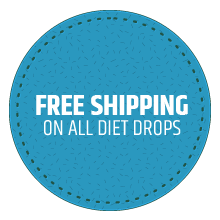6 Tips for Better Portion Control

The United States is king when it comes to large portions. According to researchers, the typical serving at your favorite restaurant is 195 percent larger than what the United States Department of Agriculture (USDA) recommends. When you take this into account, it's really no wonder that America suffers from an obesity epidemic.
Controlling your portion sizes is the first step in the right direction for weight loss and better health. Here are six surefire tips for keeping your portion sizes reasonable.
- Know the recommended serving size of the food you eat.
Instead of eating snacks out of the package or slapping a ginormous steak on your plate, do your research to find out what a single serving of any given food is, and limit your intake to that serving size. For many foods, you can simply look on the nutritional label on the package — and once you start looking, you'll probably realize that you've been eating two or three servings, which equals two to three times the calories, fat, and carbs.
To help you determine the recommended serving sizes of a variety of foods, the National Heart, Lung, and Blood Institute (NHLBI) offers a printable serving size card that covers grains, fruits 'n' veggies, dairy, and meat.
- Know how to estimate a serving size.
If you're eating out, you may have trouble deciding how much of your meal to eat, knowing that the food on your plate is probably well over the recommended serving size. Knowing how to estimate a serving size can help you stay in the right ballpark. Here are some simple tricks for estimating how much you should eat:
- A serving of meat (about three ounces) is the size of a deck of cards.
- A serving of cooked pasta is about the size of your fist.
- A serving of grains equals one piece of bread — or one waffle or pancake — about the size of a CD.
- A serving of fat or oil is about one teaspoon, or the size of the tip of your thumb.
- A serving of cheese is about the size of four dice.
- A serving of fruit is about the size of a tennis ball.
- A serving of vegetables is about the size of a baseball.
- Use smaller dishes.
Tricking yourself can work wonders for helping you reduce your portion sizes. To trick your brain into thinking you're eating more than you really are, choose smaller plates and bowls to eat from. When you fill them up, you're still eating a whole plate or bowl of food, but it's not as much as it seems.
- Dish meals out in the kitchen.
Eating family-style involves keeping the food on the table so that you can ask someone to please pass the mashed potatoes, and this encourages eating seconds. Instead, dish out your food in the kitchen to make it more difficult to re-fill your plate.
- Re-package food into single-serving portions.
When you return from the grocery store, take some time to re-package foods into single-serving portions. Cut the block of cheese into 1.5-ounce cubes, divide the carrots among single-serving snack baggies, and scoop out single servings of peanut butter, hummus, and salad dressings and store them in small lidded containers.
- Measure accurately.
If you don't have to ballpark your portion sizes, don't. Instead, measure them carefully with measuring cups and spoons or a kitchen scale. This will help ensure that most of the time, your portion sizes are the actual sizes recommended by health experts.
Stop Eating When the Portion is Gone or You're Full
Regardless of the recommended serving size for a particular food, stop eating when you're comfortably full. Stopping when you no longer feel hungry and just before you actually feel full will help prevent overeating. If you have food left on your plate, that's okay. Don't feel like you have to eat until it's gone.
By the same token, stop eating when you've consumed a single serving. If you're still hungry, just give your stomach a little time to catch up and feel full. Remember: You won't starve, and you can eat more when it's time for a snack or your next meal.


